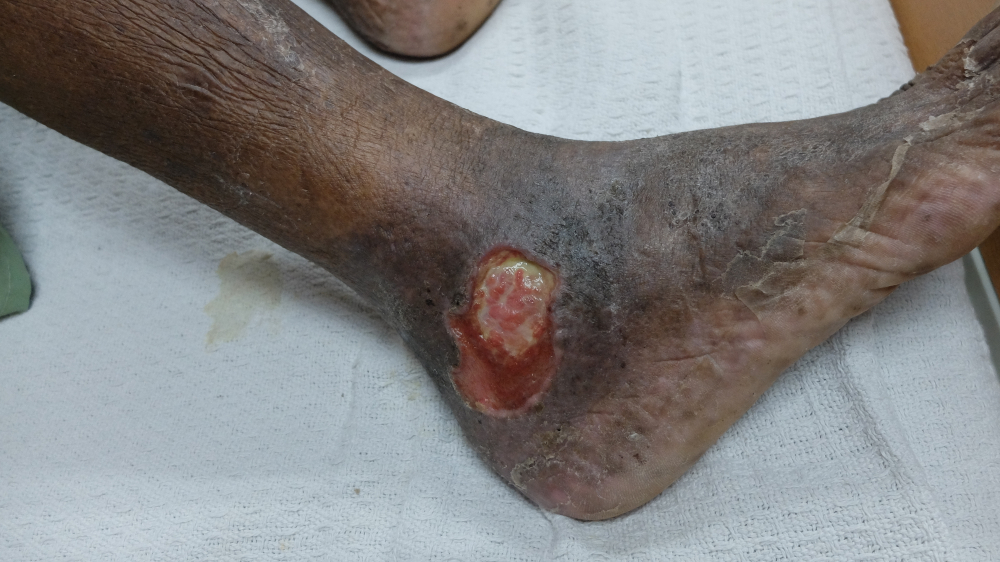Chronic ulcers resulting from surgery, trauma, and chronic medical diseases pose a serious challenge to healthcare professionals worldwide. Failure to properly manage chronic ulcers can result in significant morbidity and mortality. This article discusses one of the key ways to optimize clinical outcomes in chronic ulcer management: improving tissue perfusion.
Why Is Tissue Perfusion Critical In Chronic Ulcer Management?
Among the factors crucial to proper wound healing is the level of oxygenation at the injury site. Wound healing like any other biological metabolic process is heavily dependent on energy. Human cells utilize oxygen to generate the energy required for the synthesis of various molecules involved in tissue repair/regeneration.
As a result, a poor or absent oxygen supply to a wound site will be highly detrimental to the healing process. Tissue hypoxia (oxygen deprivation) is one of the major causes of a slowed healing of chronic tissue ulcers. Slowed cell proliferation, stunted collagen synthesis, inhibited enzyme activity, low cytokine release, and poor new blood vessel formation are some of the consequences of poor perfusion at the site of chronic ulcers.
What Are The Causes of Poor Tissue Perfusion?
The causes of poor perfusion at ulcer sites are related to changes in the tissue architecture as the body attempts wound healing. Among the most frequently identified causes of poor perfusion in chronic ulcers are alteration in blood vessels supplying the wound site, the presence of tissue edema, and the deposition of fibrous scar tissue. These factors all contribute to diminishing the oxygen reaching the affected tissues thus stunting their healing.
Strategies to Improve Tissue Perfusion in Chronic Ulcers
Improving tissue perfusion in chronic ulcers can be approached from a physical, biological, or pharmacological viewpoint. Numerous strategies exist with varied rates of success in improving chronic ulcer outcomes. Some of the methods with proven benefits are outlined below:
- Tissue conditioning (cytokine therapy, thermal conditioning, hypoxia conditioning, extracorporeal shockwave therapy)
- Management of associated chronic medical conditions (diabetes, hypertension)
- Lifestyle modifications (exercise, smoking cessation)
The techniques and methods mentioned above are all targeted at improving blood flow and consequently oxygen supply to wound sites. For the best possible outcomes, a combination of strategies is best after a thorough clinical assessment of ulcer severity is done.
Tissue Conditioning
Tissue conditioning has been shown to boost healing outcomes in patients with difficult to treat chronic ulcers as well as those with comorbidities that alter their bodies physiological healing responses. Tissue conditioning for chronic wounds can be achieved by the application of heat/cold, chemical (cytokines, growth factors), extracorporeal shockwaves, or the controlled deprivation of oxygen (hypoxic conditioning).
Thermal Conditioning
Controlled hypothermia has proven protective benefits on tissue healing in chronic wounds. Precise cooling has been shown to up-regulate the expression of heat shock proteins and improve blood flow to affected tissues.
Biochemical Conditioning
There is increasing use of various biochemical mediators such as cytokines and growth factors in the management of chronic ulcers. Studies conducted using platelet-rich plasma gel containing various pro-healing cytokines and growth factors demonstrated improvement in chronic wound outcomes. Various recombinant growth factors are currently being explored for their angiogenesis and re-epithelialization potentials in chronic wound therapy.
Hypoxic Conditioning
Another approach to boosting perfusion in chronic ulcers is the use of controlled tissue hypoxia. Oxygen deprivation for a short period has been shown to improve angiogenesis in affected tissues and boost the overall healing process.
Extracorporeal Shockwave Therapy
Research has shown the potential benefit of extracorporeal shockwave application in improving tissue perfusion in chronic wounds by boosting angiogenesis. However, further studies will be required to fully determine its usefulness in a clinical treatment setting.
Management of Comorbid Medical Conditions
There is a clear link between some medical conditions and a slowed wound healing response resulting in the development of chronic ulcers. Diabetes mellitus, hypertension, and peripheral arterial disease are three commonly implicated disease states that worsen outcomes in chronic ulcers.
As a result, proper control of their aetiologies (blood sugar levels, blood pressure, vessel occlusions) with the appropriate treatment measures will significantly boost outcomes for affected individuals. Adherence to control medications will keep comorbidities in check, limit their inhibitive effect on wound site perfusion, and improve healing.
Lifestyle Modifications
Cigarette use is a major causative factor in peripheral arterial disease with worsened outcomes for a person with chronic ulcers. Smoking cessation is seriously advocated in persons with chronic slow-healing wounds. Strategies to help smoking cessation include counseling, the use of nicotine patches, and medications like bupropion.
Another useful lifestyle modification to aid improved tissue perfusion is the implementation of moderate daily exercises. Human anatomists have described the muscles of the calves as the “second heart” because they help to improve blood circulation in the lower extremities. Structured exercises involving the calf muscles have been shown to improve perfusion in persons with peripheral arterial disease and venous insufficiency. For individuals with chronic ulcers, exercises involving ambulation will improve perfusion to wound sites and boost overall healing.



.webp)

.avif)